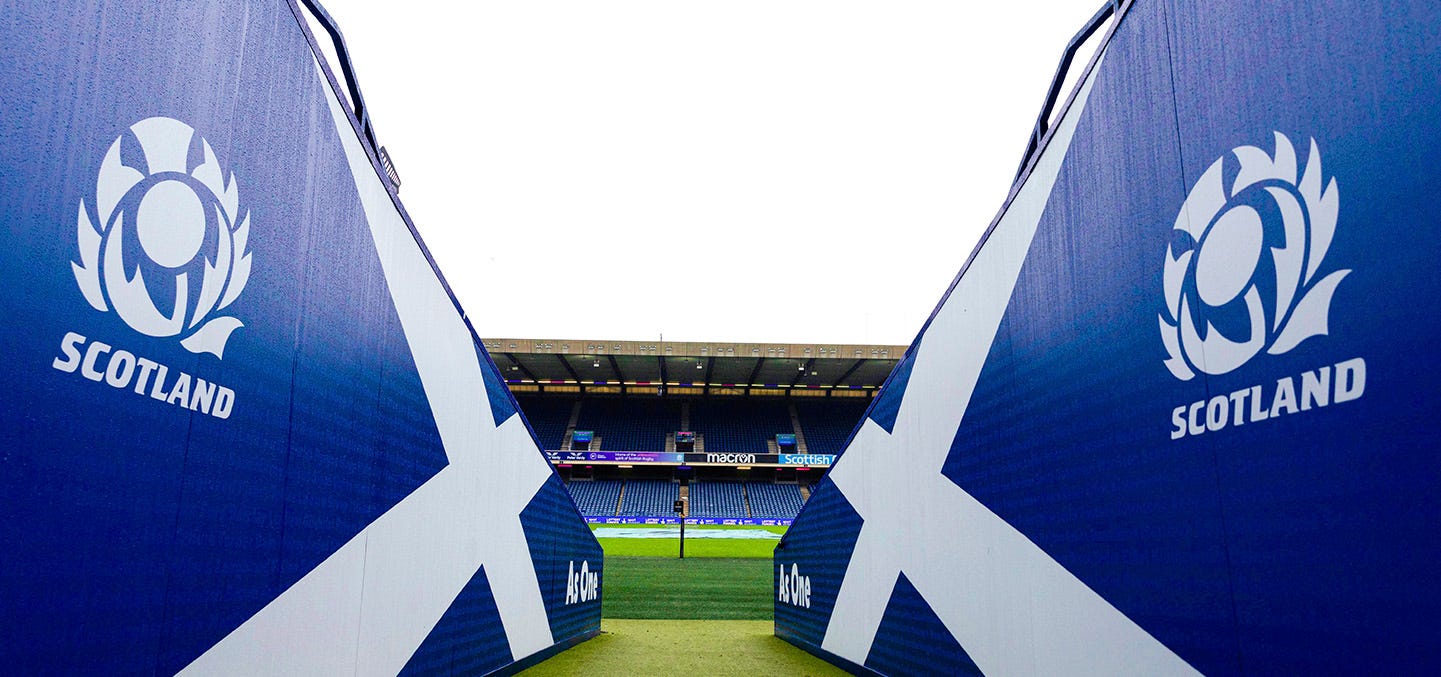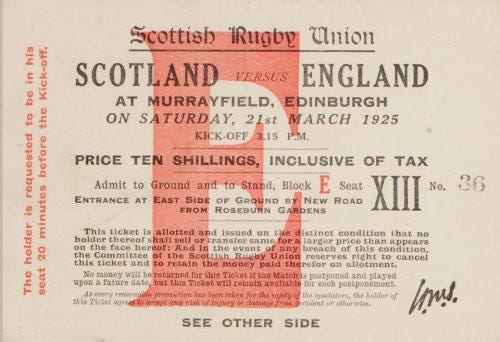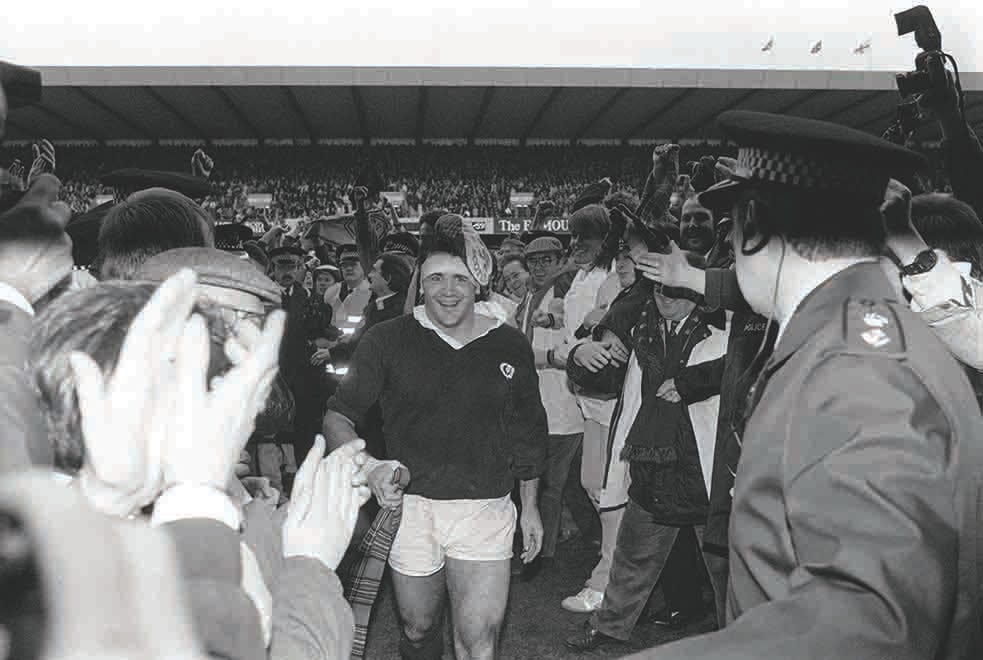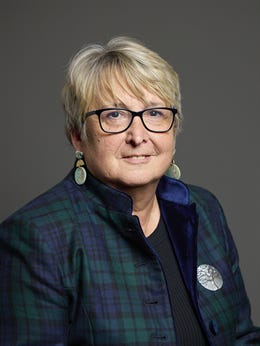‘A place where dreams are made and broken’
Murrayfield Stadium marks 100 glorious years and looks to an exciting future
It was the year a Scotsman named John Logie Baird gave the first public demonstration of moving television images; when New York became the world’s biggest city; and the first covered double-decker buses ran in London. It was 1925, and the world looked full of the promise of progress.
It was also the year a sporting legend still standing proud was born in Edinburgh - when Murrayfield Stadium opened as the home of Scottish Rugby. The commentator known around the world as the Voice of Rugby, the late, great Bill McLaren, described the stadium as “a place where dreams are made and broken”.
A place that has seen Grand Slams won and grand dreams slammed. So it has always been, and so it remains. A place of joy and despair, triumph and loss, where songs are raised in praise of heroes regardless.
Not all of the dreams made and broken in Scotland’s biggest stadium revolve around rugby. Countless romances have been born there, friendships made, losses remembered. Indeed, the Inquirer understands the Scottish Minister for Sport, Maree Todd, met her future husband at a Six Nations match.
It is also the place where mass events, if you will pardon the pun, from Papal visits to the International Assembly of Jehovah’s Witnesses have taken place, although nowadays it is much better known as the venue where fans come to worship the world’s musical superstars when they come to perform in Scotland.
A host of events are planned to mark the centenary, from a festival of rugby to special tours, from new inductees into the Hall of Fame at a special event through to asking people to share their Murrayfield Memories.
As this great arena which has witnessed so much drama, celebrates its 100th birthday this month, the Inquirer looks at what makes Murrayfield such a special place.
And we look at what the future may hold – from plans for a new hotel, to cutting edge brain research, to what new shape the stadium might take.
The History
The stadium was built on 19 acres of land bought from the Edinburgh Polo Club in 1922 and was officially opened as the home for Scotland’s rugby team on March 21, 1925, with a match against England which Scotland won 14-11 to win our first Grand Slam.
Two years later, additional land was purchased giving the site its current footprint of more than 25 acres.
Previously, games had been played at Inverleith, but with the lease expiring at Ferry Road the decision had been taken to move. The stadium was one of the first to have pitch protection from the weather, with an electric blanket installed in 1959, and then replaced in 1991 with under soil heating which was gas powered. A new stand was built in 1981, and two electronic scoreboards installed.
But it was 1994 before the new stadium started to take shape, when at a cost of £50 million the new stands were built and floodlighting installed, raising seated capacity to more than 67,000. It must be noted the work at the stadium has always been funded by debentures – with no cash from the public purse.
Sporting Memories
Since it first became home to international matches, Murrayfield has hosted more than 300 internationals, seeing the greatest players on earth come to the Capital to compete with Scotland’s finest. Two more Grand Slams have followed, in 1984 with a thrilling win against France, and then again in the unforgettable ‘slow March’ game against England in 1990, when a 13-7 win against an England side also chasing the Slam was achieved after the team purposefully marched onto the pitch ahead of kick-off led by captain David Sole.
Memories also of the epic 1975 defeat of Wales in 1975, a game which saw a world record 104,000 cram the old stand and terracings – which remained the sport’s biggest crowd right up until 1999, when an Australia v New Zealand match at the Sydney Olympic stadium attracted more than 107,000. Murrayfield retains the European record.
The crowd that day was so vast, with many particularly crowding into the space “under the clock” that safety concerns meant matches thereafter became all ticket.
One visiting team has never tasted defeat at Murrayfield – the All Blacks. In more than a century of competition, Scotland has still to beat the sport’s most famous side, but they came memorably close in 1983 when the two teams fought out a thrilling 25-25 draw.
There have been World Cups as well, with matches being hosted in 1991, 1999, and 2007 tournaments.
And in the rugby league code, the Challenge Cup Final was staged at Murrayfield in 2000 and again in 2002 when the traditional venue for the match, Wembley, was unavailable due to fixture clashes.
Worship at the Stadium
Around 45,000 young people gathered at Murrayfield on May 31 1982, to host the visit of Pope John Paul II. It formed a major part of the Pontiff’s visit to Scotland that year, and during his visit he told the crowd: “Your lives cannot be lived in isolation, and even in deciding your future you must always keep in mind your responsibility as Christians towards others. There is no place in your lives for apathy or indifference to the world around you.”
The stadium also hosted several major events for Jehovah’s Witnesses in the 1960s and 70s, each usually attracting more than 20,000 people. And the great American evangelist Dr Billy Graham also spoke at the stadium, in 1991.
Worship of a different kind is now more common at Murrayfield, which has become the preferred venue for music superstars when they perform live in Scotland. In recent years we have seen Beyonce, Harry Styles, Bruce Springsteen and Taylor Swift, among others, and in the coming year there is more for music fans to look forward to with Oasis, AC/DC and Robbie Williams all set to perform over this summer.
Of course, it has always seen the stars come out to perform, starting with David Bowie back in 1983, with the Rolling Stones and Madonna also among those to have performed over the years.
But now the combination of Scotland’s biggest stadium with new tram links both into the city centre and out to the airport, which in turn provides strong national and international links, have made Murrayfield the stadium tour venue of choice for major promoters and artists – and it is all good for the city’s economy.
An impact report produced for Scottish Rugby took in the period June 1 – December 31, 2024, taking in the three Taylor Swift concerts and the Autumn Rugby Test series, found that it had generated economic benefit of more than £120 million for the city.
Future Plans
Scottish Rugby recently announced a new agreement to welcome Scottish Brain Sciences and its operation to the stadium – cementing the organisation’s commitment to player welfare and brain health.
The clinical research company aims to find new tests and treatments for Alzheimer’s and similar diseases, and works closely with Scottish Rugby in its brain health clinic for former players.
Scottish Rugby chair John McGuigan has spoken about plans to upgrade Murrayfield, in particular the potential for building a hotel on-site. Around £10 million is to be spent on general upgrading work – with new LED screens already installed along with updating the PA system.
About building a hotel on the stadium campus, he has said that one option might include working with a hotel chain. “A hotel would be an obvious thing to bring on site for a variety of reasons - you could run conferences there and you could have people staying there before a game. It makes it a better deal in terms of a concert promoter coming here and you could offer them that kind of facility on the doorstep.”
He stressed the organisation was in the early stages regarding a potential hotel.
One other major option that the organisation must be looking at – with an envious eye to the Principality Stadium in Wales – is a retractable roof. Given Edinburgh’s more northerly location and greater exposure to the elements, a roof would provide protection for both rugby crowds and concert goers.
However the costs, for a stadium which has paid for itself through debenture income, would be a stretch. The stadium’s local MP, Christine Jardine, has supported the centenary and has also suggested Scotland’s national rugby stadium might benefit from a little financial support from the public purse, perhaps through the National Lottery.
“Our national stadium does not seem to attract the same financial support from our government which others have received. In Cardiff, for example, the Principality Stadium was opened in 1999 with £4.3 million from the Millennium Commission raised through the National Lottery, and Wembley got £120m.
“Investment in what are spectacular venues, I would argue, sets a precedent we should have replicated in Edinburgh. The economic benefit to the city, and the country is huge – and not just from the rugby internationals.”
One thing is for sure. The next century will continue to see Murrayfield develop, inspire, and bring people together – and we can but hope it’s under a spanking new roof.








